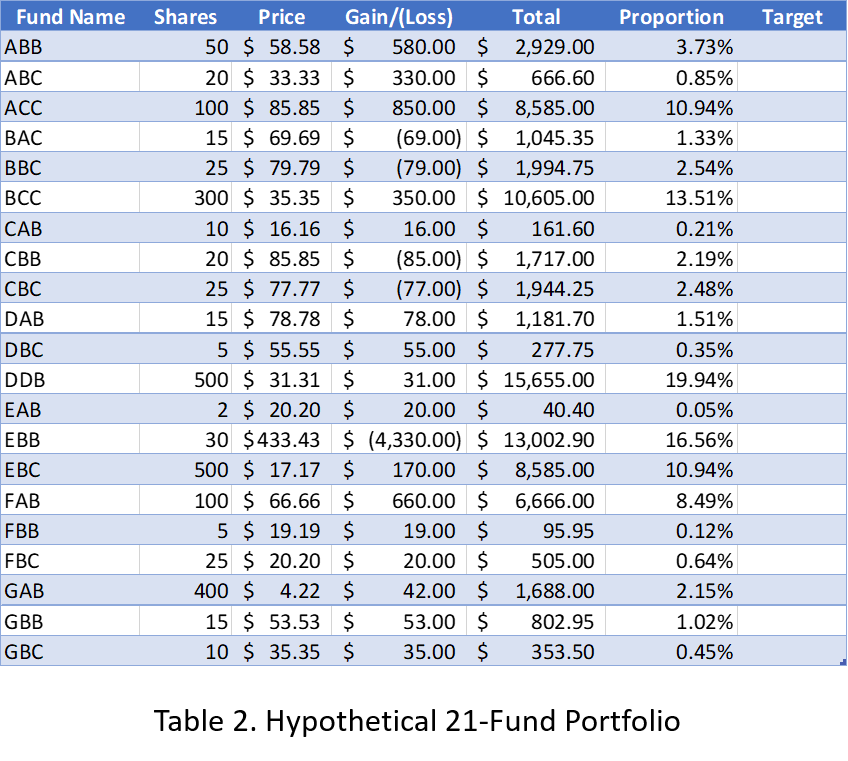How Fighter Pilots KISS Part 2
After reading part 1, hopefully we’re past the giggle-inducing imagery… so let’s get down to brass tacks… How many separate investments do you need in your portfolio if you’re trying to K.I.S.S.?
Asset Allocation
If you recall from the 5 pillars of investing, asset allocation is the concept that we diversify our investments across various asset classes to avoid putting all of our eggs in one basket. But what asset allocation is the right one? I have to give you the standard patch answer—it depends. In fact, it depends on so many factors that it’s literally impossible to give blanket recommendations on the topic. However, it is reasonably easy to frame the discussion.
Most investors start with the idea that there are 3 main asset classes:
- Equities such as stocks and funds with stocks in them
- Fixed income such as bonds and funds with bonds in them
- Cash and cash equivalents such as CDs and Money Market Funds
When you look at most model portfolios from brokerage firms or advisors, you’ll see that there usually more than just 3 holdings. That’s because each of the 3 asset classes can and probably should be parsed into market segments. Common classifications include:
- Equities
- Large Cap (Cap = capitalization—the size of the companies represented)
- Mid Cap
- Small Cap
- Micro Cap
- International
- Real Estate
- Fixed Income
- Government Bonds
- Corporate Bonds
- Cash
- Short-term (e.g. checking & savings accounts)
- Longer-term (e.g. CDs)
In terms of K.I.S.S., we just went from 3 choices to 10, so potentially not in the right direction for avoiding complexity. Unfortunately, we’re not done slicing and dicing the options just yet. In order to capture how specific parts of the global market work, investment firms usually offer:
- Equities
- Large Cap
- Growth (companies that are growing and have higher price-to-earnings ratios)
- Value (companies that researchers believe are under-valued by the market)
- Blend (a blend of growth and value companies)
- Mid Cap
- Growth
- Value
- Blend
- Small Cap
- Growth
- Value
- Blend
- Micro Cap
- International
- Developed Markets
- Emerging Markets
- Specific Markets (e.g., Asia or Europe)
- Real Estate
- Domestic
- Equity
- Income
- International
- Domestic
- Fixed Income
- Government Bonds
- Long Term (e.g., 30 years)
- Intermediate (e.g., 2-10 years)
- Short Term (e.g., 30 days to 2 years)
- Corporate Bonds
- Long Term
- Intermediate
- Short Term
- International Bonds
- Developed Markets
- Emerging Markets
- Cash
- Short-term (e.g. checking & savings accounts)
- Longer-term (e.g. CDs)
- Government Bonds
- Large Cap
Now the list of asset classes has rabbit-farmed to 26, but we haven’t even discussed all of the other ways to invest such as private equity, currency, and commodities. Each of these categories can be further subdivided to the heart’s content. I’m intentionally leaving out speculative assets such as digital currency, art, and other things that require the next purchaser to pay a higher price in order to merit investment.
If diversification is good, shouldn’t more diversification be better?
Going back to the five pillars, Investor Behavior is potentially the most crucial. Investing is much more like autopilot than an AMRAAM, you have to monitor it because it’s not fire-and-forget. A key reason to monitor your investments is to know what needs to be rebalanced and by how much.


Compare the hypothetical portfolios in Table 1 and Table 2. The 5-fund portfolio is pretty reasonable to evaluate. Each fund has a clear target proportion, hopefully defined by the investor’s investment policy statement (IPS). When it’s time to rebalance, such as quarterly or annually, it’s not going to take a lot of time at the abacus to figure how much to buy and sell to bring the portfolio back to its target allocation.
Characteristics of the hypothetical 21-fund portfolio in Table 2 are pretty common for advisor-sold portfolios, but many of us collect lots of small holdings on our own too. It has many intricate little pieces which seem to indicate exquisite design, but it doesn’t take long before the logic is hard to discern.
At the macro level, looking at the two tables, most of us can probably find a way to keep a limited-holding portfolio balanced, but as the number of holding grows, it’s going to be hard to weigh the juice and the squeeze.
Judy! How Many Funds Do I Need?
While I can’t tell you how many holdings your portfolio should have, I can offer some questions that can help you sort this merge.
- What is your goal? Match broad market performance or perhaps be able to clearly see the impact of smaller market segments?
- How much time do you have to devote to investment management, such as rebalancing?
- How much risk are you willing to take?
- How much correlation with the broader market is acceptable to you?
- How will you optimize the proportion of each holding to the portfolio, especially if each holding is a small fraction?
- If a holding is a small fraction, how will you measure it’s effect on overall portfolio performance?
- How much time do you have to research each holding initially and periodically to ensure it belongs in the portfolio at all?
While this list isn’t exhaustive, clearly the answers skew towards a limited-fund portfolio for most time-starved investors.
There are some other reasons to minimize splitting the atom too much in a portfolio:
- Many funds hold the same stocks, even if they’re called Growth/Blend/Value. You might not be diversifying as much as you think unless you evaluate fund holdings.
- Costs have declined over the years, but more specialized holdings usually have higher expenses.
Cleared to Rejoin
Critics scoff that the TSP only has 5 core investments. It might be nice if it offered exposure to real estate or maybe even a few specific market sectors. At the same time, the TSP makes it awfully simple to design a portfolio, evaluate it’s expected risk/return, rebalance periodically, and still have time practice your IPUG briefs so you can focus on what really matters. If your portfolio has too much overgrowth and you can’t argue for how each holding is pulling its weight, maybe it’s time to simplify. You’ll certainly want to consider the tax consequences along with your goals and risk tolerance, but there are plenty of million-dollar fighter pilots running around with very simple portfolios. Perhaps it’s time to give your portfolio a K.I.S.S. too?
Fight’s on!
Winged Wealth Management and Financial Planning LLC (WWMFP) is a registered investment advisor offering advisory services in the State of Florida and in other jurisdictions where exempted. Registration does not imply a certain level of skill or training.
This communication is for informational purposes only and is not intended as tax, accounting or legal advice, as an offer or solicitation of an offer to buy or sell, or as an endorsement of any company, security, fund, or other securities or non-securities offering. This communication should not be relied upon as the sole factor in an investment making decision.
Past performance is no indication of future results. Investment in securities involves significant risk and has the potential for partial or complete loss of funds invested. It should not be assumed that any recommendations made will be profitable or equal the performance noted in this publication.
The information herein is provided “AS IS” and without warranties of any kind either express or implied. To the fullest extent permissible pursuant to applicable laws, Winged Wealth Management and Financial Planning (referred to as “WWMFP”) disclaims all warranties, express or implied, including, but not limited to, implied warranties of merchantability, non-infringement, and suitability for a particular purpose.
All opinions and estimates constitute WWMFP’s judgement as of the date of this communication and are subject to change without notice. WWMFP does not warrant that the information will be free from error. The information should not be relied upon for purposes of transacting securities or other investments. Your use of the information is at your sole risk. Under no circumstances shall WWMFP be liable for any direct, indirect, special or consequential damages that result from the use of, or the inability to use, the information provided herein, even if WWMFP or a WWMFP authorized representative has been advised of the possibility of such damages. Information contained herein should not be considered a solicitation to buy, an offer to sell, or a recommendation of any security in any jurisdiction where such offer, solicitation, or recommendation would be unlawful or unauthorized.






